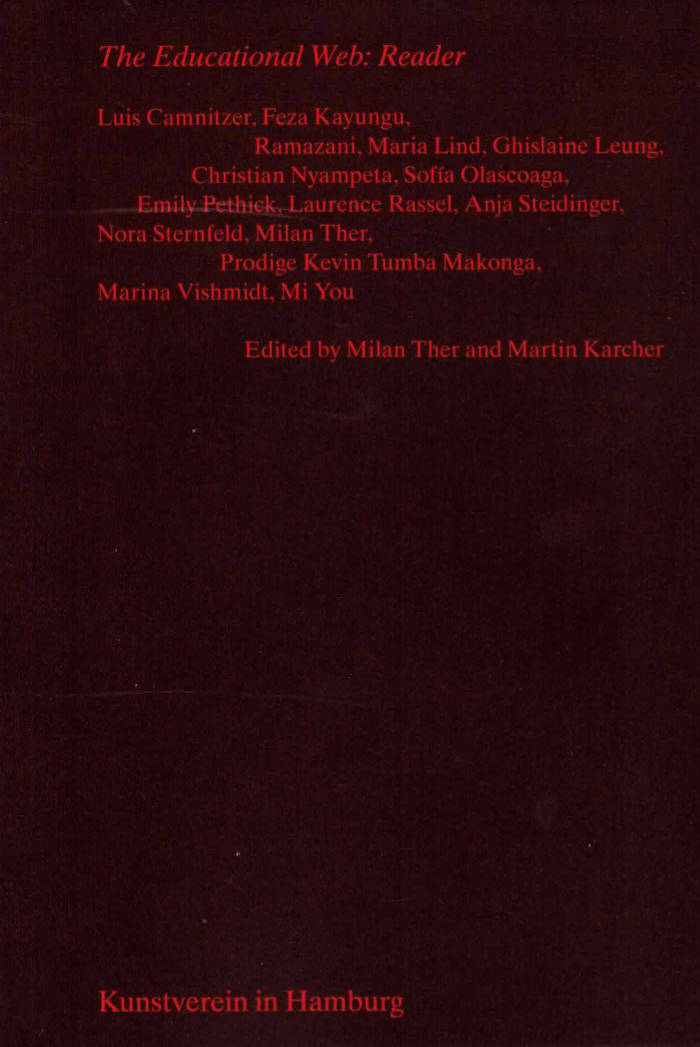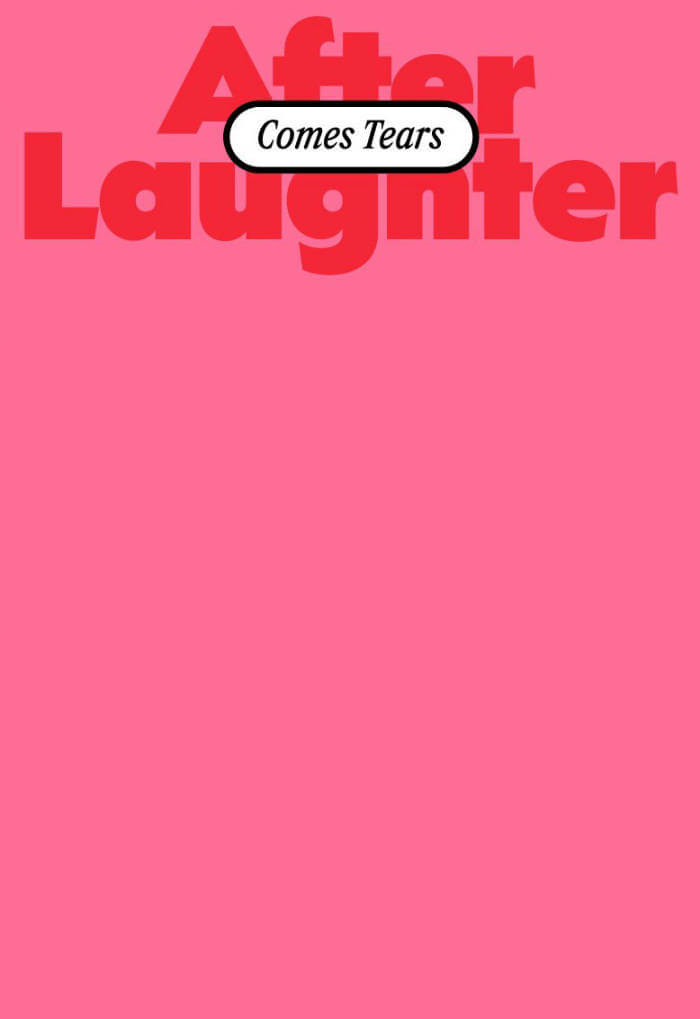Ghislaine Leung
Ghislaine Leung

Bosses
As an artist how can you get out of the hiding position? To make art is to understand how you are, notice your prejudices and assumptions about value and acknowledge your hand in an unequal world, to recognise how you institute yourself while letting go of the outcome of work.
Ghislaine Leung is a British conceptual artist. Her work uses score-based instructions to radically redistribute and constitute the terms of artistic production. For Leung, limitations, felt as personal, institutional, structural or systemic to the parameters of industry, are engaged in as means to institute differently. Born in Stockholm, Sweden to a father from Hong Kong and a mother from London, she was raised first in Reims, France and then in London, England. She received a BA Fine Art in Context at the University of the West of England in 2002 and a Masters in Aesthetics and Art Theory at the Centre for Research in Modern European Philosophy at Middlesex University in 2009. Between 2004 and 2014 she worked at Tate and LUX, London. Leung’s first book was Partners (Cell Project Space, 2018). She lives in London, UK.
978-1-9164250-0-2
21.6 x 13.9 cm
And more

The Educational Web: Reader
A reader documenting the exhibition and symposium on eight schools, educational organisations and independent, self-organised educational programmes which see themselves as alternatives to traditional art academies and currently occupy central positions in the field of contemporary art.
The Educational Web: Reader brought together eight schools, educational organisations and independent, self-organised educational programmes at the Kunstverein in Hamburg. Often with a strong theoretical orientation, each of the programmes can be understood as a space for learning, a network and a community that does not rely on traditional curricula, but is organised around a form of immediacy and the relationship between artistic practice and local context. The programmes were invited to exhibit their own pedagogical approaches, resulting in an exploration of the interface between pedagogy, artistic practice and curatorial work.
Artists, researchers, and educators came together for the symposium on 1 and 2 July 2023 to articulate and reflect on recent developments in artist-initiated pedagogy and institutional practice. The symposium continued the questions raised by the exhibition and was expanded by a series of contributions, which are now collected for the first time in revised form in this volume, The Educational Web: Reader.
Texts by Luis Camnitzer, Feza Kayungu Ramazani, Maria Lind, Ghislaine Leung, Christian Nyampeta, Sofía Olascoaga, Emily Pethick, Laurence Rassel, Anja Steidinger, Nora Sternfeld, Prodige Kevin Tumba Makonga, Marina Vishmidt, Mi You.

After Laughter Comes Tears
Joel Valabrega, Clementine Proby and 1 more
After Laughter Comes Tears, in its exhibition and book forms, brings together artists from different generations who are experimenting with the idea of the performative. This publication follows the structure of the exhibition at Mudam Luxembourg, with a prologue, four acts and an epilogue, which each sample excerpts from the range of theory, fiction and poetry that inspired and substantiate the themes of the exhibition. Widening the spectrum of the traditional catalogue, each artist was given a "carte blanche"—an invitation to contribute to the book on their own terms.
This performative book was conceived as a story; a story of the pains, joys, anxieties and doubts of the 2020s. It takes as a starting point, the feelings of stasis and anger that define the present stage of late capitalism, framed by the anxieties of a generation facing a climate crisis, welfare states trampled and failed by neoliberal policies and the rise of xenophobia around the globe, partly fueled by fake news spreading on- and offline. It is an intuitive journey through the voices of thirty-four artists expressing the lurid shapes of the crises that surround us and form a (never exhaustive) part of our contemporary reality.
They are Cem A., Panteha Abareshi, Monira Al Qadiri, Kate Cooper, Pauline Curnier Jardin, Jesse Darling, Stine Deja, Omer Fast, Anna Franceschini, Guan Xiao, Sidsel Meineche Hansen, Lukáš Hofmann, Christian Jankowski, Chris Korda, Ndayé Kouagou, Ghislaine Leung, Isaac Lythgoe, Taus Makhacheva, Diego Marcon, Jacopo Miliani, Marie Munk, Chalisée Naamani, Agnieszka Polska, PRICE, Jean-Charles de Quillacq, Mika Rottenberg, Julika Rudelius, Dorian Sari, Sin Wai Kin, Shinuk Suh, Martine Syms, Mungo Thomson, Cajsa von Zeipel, and Artur Żmijewski.
Edited by Clarisse Fahrtmann, Clementine Proby, Joel Valabrega.
Foreword by Bettina Steinbrügge.
Contributions by Kate Cooper, Lukas Hofmann, David McDermott, Markus Pilgram, Agnieszka Polska, Clémentine Proby, Sin Wai Kin, Bettina Steinbrügge, Geraldine Tedder, Joel Valabrega, Lauren Wetmore.

Spike #75 – Closed due to Colonialism, Elitism, and a Private Dinner – The Museum Issue
Spike #75 fêtes the museum in all its stuffy, messy, showy, old-timey glory, as a home-away-from-home, the address of solace and astonishment.
Featuring William Pope.L, Simon Wu, Louise Lawler, Ben Davis, Ann Demeester, Anthony Hudek, Meschac Gaba, Bernadette Van-Huy, Ghislaine Leung, Estelle Hoy, Tea Hacic-Vlahovic, and many more.
This issue is a guestbook to be leafed through at half-light, to be reminded among all the petitions to should of what the museum already is: a trove of our symbols and the histories they shift for; a stubborn beauty mark amid everything's turning smoother; an agora and a target and a legacy of timeless becoming. If it is a half-light of dawn, let it be a new chapter; and if dusk, then a eulogy of many voices.
Founded by the artist Rita Vitorelli in 2004, Spike (Spike Art Quarterly) is a quarterly magazine on contemporary art published in English which aims at sustaining a vigorous, independent, and meaningful art criticism. At the heart of each issue are feature essays by leading critics and curators on artists making work that plays a significant role in current debates. Situated between art theory and practice and ranging far beyond its editorial base in Vienna and Berlin, Spike is both rigorously academic and stylishly essayistic. Spike's renowned pool of contributing writers, artists, collectors and gallerists observe and reflect on contemporary art and analyse international developments in contemporary culture, offering its readers both intimacy and immediacy through an unusually open editorial approach that is not afraid of controversy and provocation.

F.R. David - Zeros And Ones
G. Leung, W. Holder and 2 more
Riffing off the title, this volume includes an interview with Carolyn Lazard – an artist whose conceptual and often spare videos, sculptures, installations, and performances explore the full amplitude of relation – by Catherine Damman, plus a feature on New York-based contemporary artist Tishan Hsu, whose practice examines the “embodiment of technology”, and contributions by time-based media artist Silvia Kolbowski, for whom political resistance, the unconscious, and structures of spectatorship are a central concern of all her projects; choreographer and dancer Yvonne Rainer; and science fiction author Octavia Butler.
Retroactively compiled from the curators*’ footnotes to the exhibition handout of the 2021 exhibition Zeros and Ones, at KW Berlin.
Dedicated to the Sadie Plant book of the same name (Zeros + ones: digital women + the new techno culture, 1997), the issue embodies a (cybernetic) reading & writing machine, as it co-authors artists’ work.
* Edited with Kathrin Benthele, Anna Gritz, and Ghislaine Leung - the edition has 180 pages, 4 colour plates, two bookmarks, an otherwise unavailable postcard donated by the Stanley Brouwn estate, and… SIXTEEN possible covers, reproducing a work by Lutz Bacher.